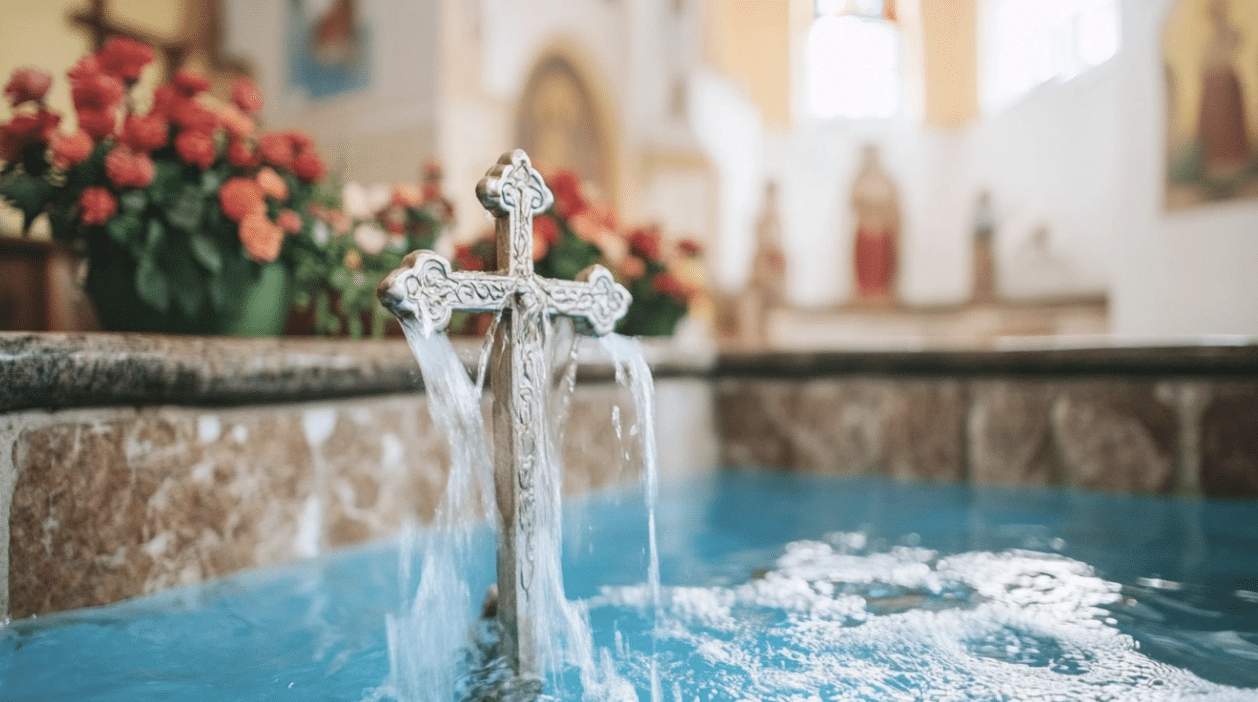
Baptism is a profound and symbolic ritual in many Christian traditions, marked by various meaningful symbols that enhance the ceremony’s spiritual significance.
From the water representing purification to the lighted candle symbolizing the light of Christ, each symbol plays a crucial role in the baptismal rite.
Understanding these symbols can deepen one’s appreciation of the ceremony and its importance.
In this guide, we’ll explore ten key symbols used in baptism, including their meanings, origins, and roles in the ritual.
Whether preparing for a baptism or simply interested in the rich symbolism behind this sacred practice, we promise you’ll gain valuable insights into each symbol’s significance.
What are the Most Common Symbols of Baptism?
1. Water
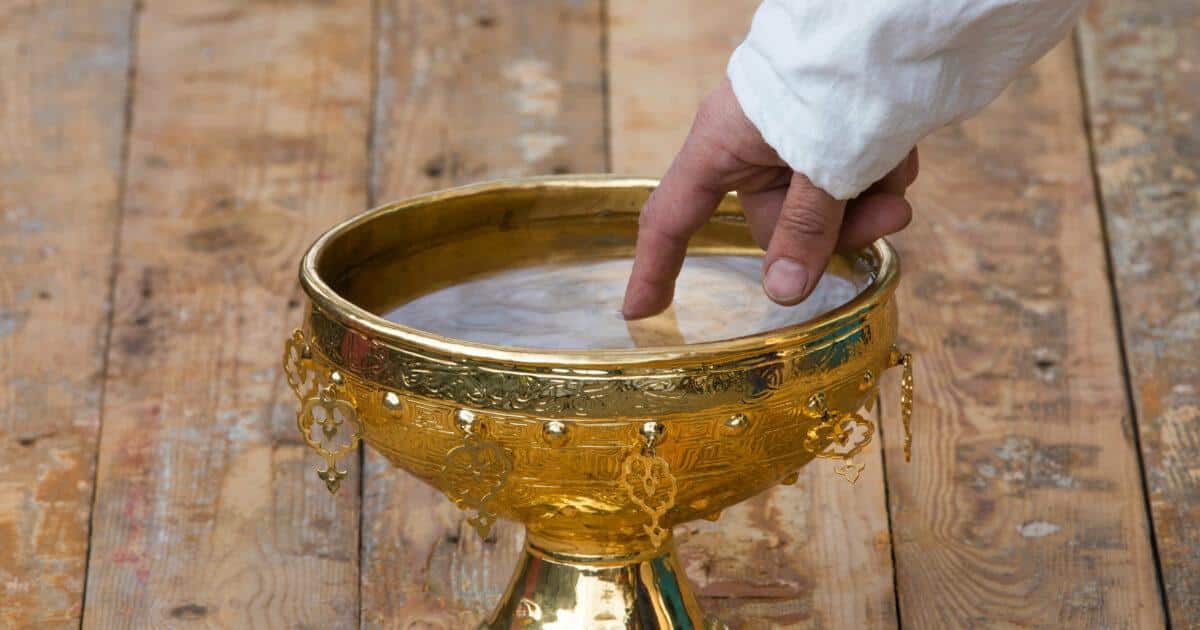
- Meaning and Significance: Water symbolizes purification, cleansing from sin, and new life in Christ. It is essential for the ritual of baptism, representing the washing away of past sins and the beginning of a new life.
- Biblical or Historical Origins: Water is a central element in Christian baptism, as seen in Jesus’ baptism by John the Baptist in the River Jordan (Matthew 3:16). It also has roots in Jewish purification rituals.
- Usage in Baptismal Rites: Water is poured over the individual, or they are immersed in it during the baptismal ceremony.
- Variations Across Denominations: While the use of water is universal, denominations differ in the method of application, such as sprinkling, pouring, or immersion.
- Visual Description: Typically, water is presented in a baptismal font or basin, often in a church’s sanctuary or baptismal area.
2. White Garment
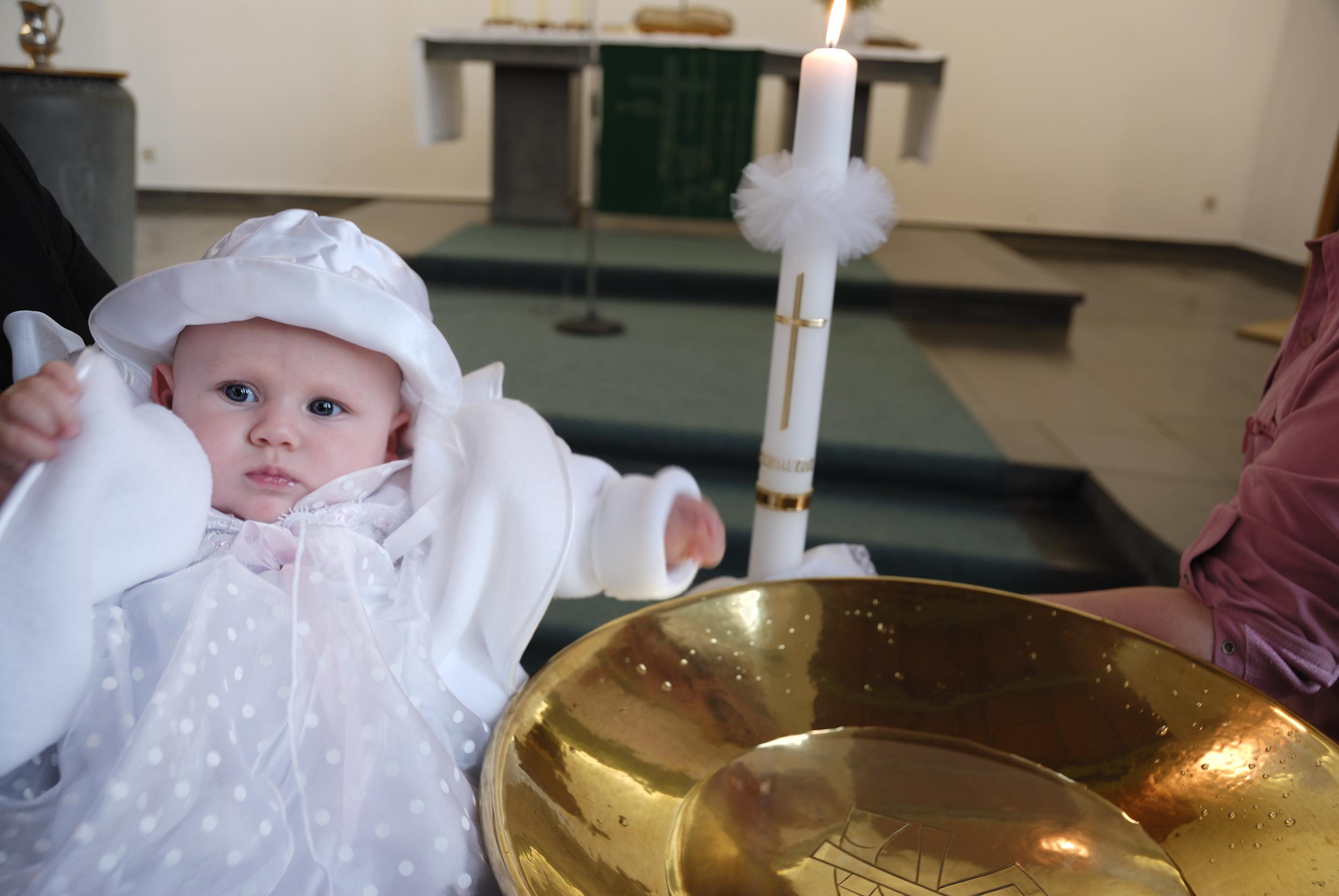
- Meaning and Significance: The white garment symbolizes purity, innocence, and the new life that the individual is entering into as a member of the Christian faith.
- Biblical or Historical Origins: The white garment signifies a clean slate and is referenced in Revelation 7:14, where the righteous are described as wearing white robes.
- Usage in Baptismal Rites: The individual being baptized is dressed in a white garment after the baptism, symbolizing their spiritual renewal.
- Variations Across Denominations: Most Christian denominations use white garments for baptisms, though the style and formality of the garment can vary.
- Visual Description: During the ceremony, a simple white robe or gown, often plain but sometimes adorned with religious symbols, is worn.
3. Dove

- Meaning and Significance: The dove represents the Holy Spirit, peace, and God’s presence. It symbolizes the Holy Spirit’s descent upon Jesus during His baptism.
- Biblical or Historical Origins: The dove is prominently featured in the story of Jesus’ baptism, where the Holy Spirit descended like a dove (Matthew 3:16).
- Usage in Baptismal Rites: Often depicted in religious art, church decorations, or as symbols in baptismal documents and paraphernalia.
- Variations Across Denominations: The dove is a common symbol across many Christian denominations, though its representation in art and decoration may vary.
- Visual Description: Typically shown as a white dove, sometimes with an olive branch, either as a physical object or in imagery.
4. Cross
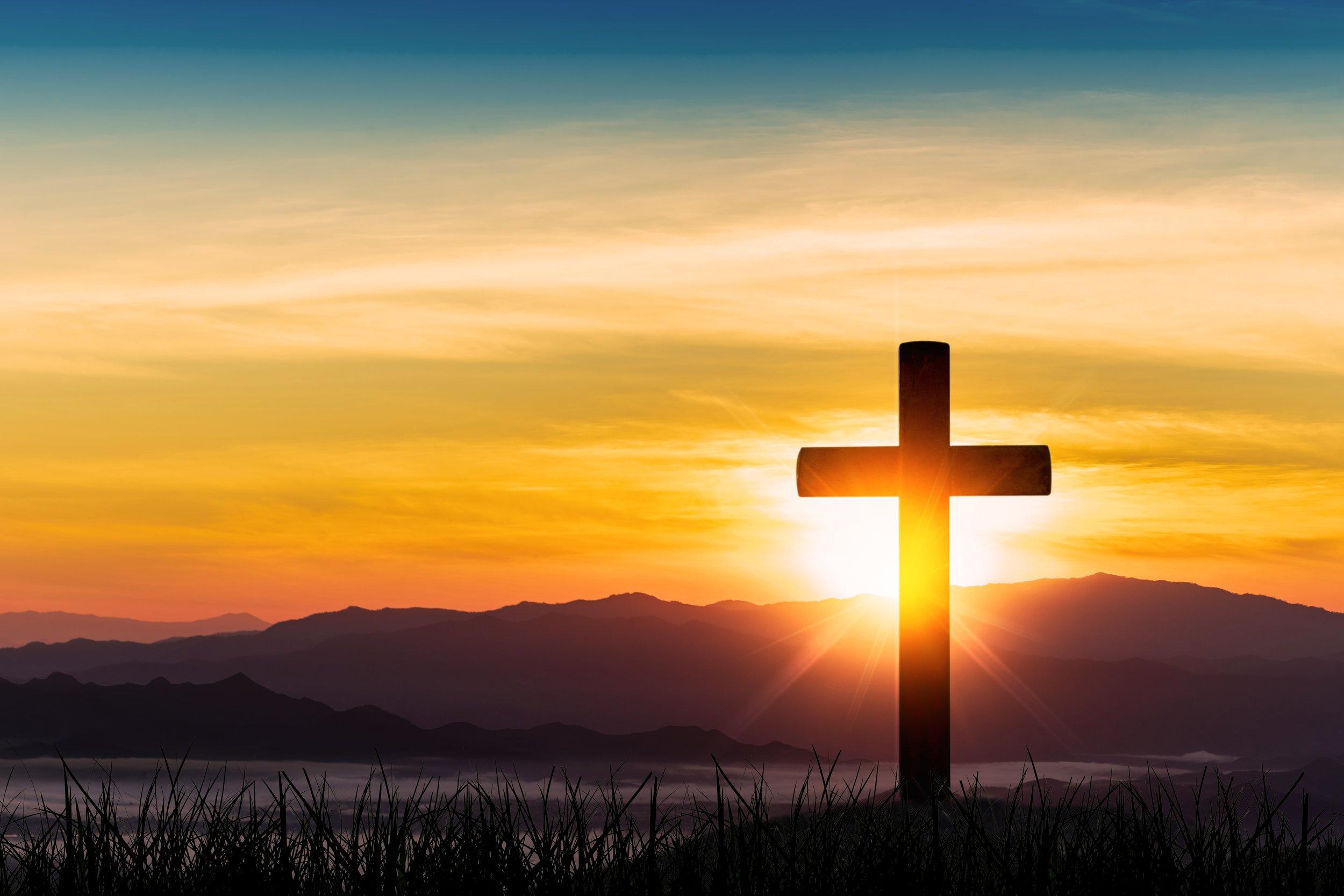
- Meaning and Significance: The cross represents Jesus Christ’s sacrifice and humanity’s redemption. It signifies the new covenant established through Christ’s death and resurrection.
- Biblical or Historical Origins: The cross is central to Christian theology, symbolizing Jesus’ crucifixion and the promise of eternal life (John 3:16).
- Usage in Baptismal Rites: Often displayed on baptismal fonts or incorporated into the baptismal ceremony through gestures or prayers.
- Variations Across Denominations: Depending on denominational traditions, the form and style of the cross can vary, from plain crosses to ornate crucifixes.
- Visual Description: Typically depicted as a simple or ornate cross, either worn as jewelry or displayed prominently in religious settings.
5. Chrism (Holy Oil)
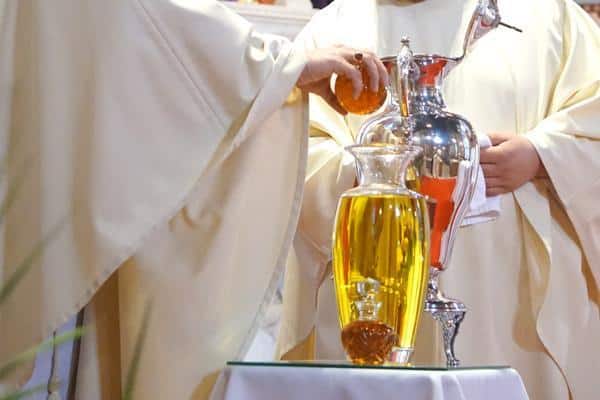
- Meaning and Significance: Chrism symbolizes the anointing with the Holy Spirit, empowerment, and consecration. It signifies the individual’s entry into the Christian community and their anointing by God.
- Biblical or Historical Origins: Anointing with oil is a biblical tradition used in various contexts, including the anointing of kings and prophets (1 Samuel 16:13).
- Usage in Baptismal Rites: Chrism is applied to the forehead or other parts of the body of the baptized, often during or immediately following the baptism.
- Variations Across Denominations: Chrism is more common in Catholic, Orthodox, and some Anglican traditions, while other denominations may not use it.
- Visual Description: Chrism is a consecrated oil, usually scented with aromatic spices, and is applied using a small brush or dabbed onto the forehead.
6. Baptismal Font

- Meaning and Significance: The baptismal font is the vessel that holds the water for the baptism ceremony. It symbolizes the beginning of a new life in Christ through the ritual of immersion or pouring.
- Biblical or Historical Origins: The use of a font dates back to early Christian traditions, where it was used to administer baptism.
- Usage in Baptismal Rites: The font is central to the baptism ceremony, where water is drawn for the rite. It can be found in many churches, often at the entrance or in a dedicated area.
- Variations Across Denominations: The design and size of the baptismal font can vary widely, from simple basins to elaborate, sculpted structures.
- Visual Description: A baptismal font is often a large basin or bowl, typically made of stone, metal, or ceramic, sometimes with intricate carvings or designs.
7. Shell

- Meaning and Significance: The shell is a traditional symbol of baptism, representing the act of pouring water over the candidate’s head and the idea of cleansing and rebirth.
- Biblical or Historical Origins: The use of a shell as a symbol of baptism has roots in early Christian art and traditions.
- Usage in Baptismal Rites: A shell is often used to scoop and pour water during the baptism ceremony.
- Variations Across Denominations: Commonly used in Catholic and Orthodox traditions, less so in Protestant denominations.
- Visual Description: Typically a small, scallop-shaped shell, often made of metal or sometimes used as a decorative motif.
8. Lighted Candle
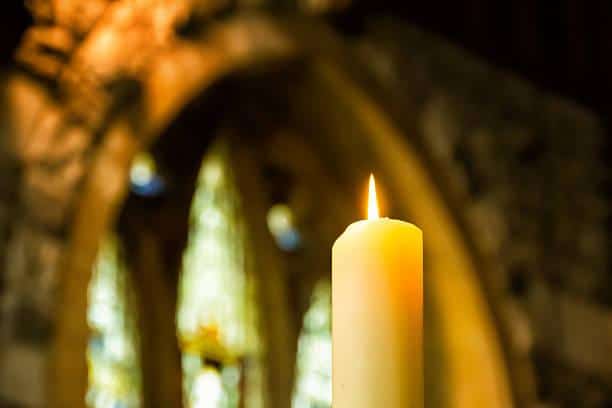
- Meaning and Significance: The lighted candle symbolizes the light of Christ coming into the life of the baptized individual, representing faith and enlightenment.
- Biblical or Historical Origins: The concept of light as a symbol of Christ is derived from John 8:12, where Jesus says, “I am the light of the world.”
- Usage in Baptismal Rites: A candle is lit during the baptism ceremony and often given to the parents or godparents to be kept as a symbol of the child’s new life in Christ.
- Variations Across Denominations: Widely used in many Christian traditions, though the specific practices and rituals may vary.
- Visual Description: Typically, a white or ivory candle, often with religious symbols or the name and date of the baptism inscribed.
9. Bible

- Meaning and Significance: The Bible represents the Word of God and the teachings that the baptized individual will follow. It signifies the spiritual guidance and foundation of Christian life.
- Biblical or Historical Origins: The Bible is central to the Christian faith, with numerous references to baptism and spiritual teachings.
- Usage in Baptismal Rites: The Bible is often used in the ceremony for reading scriptures and may be presented to the baptized or their family.
- Variations Across Denominations: The specific passages read or the version of the Bible used may vary among denominations.
- Visual Description: A bound book, often with a decorative cover, may include inscriptions or commemorative elements related to the baptism.
10. Godparents

- Meaning and Significance: Godparents are chosen to support the child’s spiritual upbringing and act as mentors in their faith journey.
- Biblical or Historical Origins: The role of godparents is rooted in early Christian traditions where they were responsible for the spiritual guidance of the baptized.
- Usage in Baptismal Rites: Godparents are often present during the baptism ceremony, making promises to help raise the child in the Christian faith.
- Variations Across Denominations: The role and responsibilities of godparents can vary; some denominations may have more formal requirements or expectations.
- Visual Description: Godparents are typically represented by individuals chosen by the family, often standing near the baptismal font or participating in the ceremony.
Conclusion
Baptism symbols enrich the ceremony with deep spiritual meaning and tradition, each uniquely representing purification, faith, and new beginnings.
These elements, from the cleansing water to the symbolic white garment and a lighted candle, help convey the significance of entering a new life in Christ.
By understanding the purpose and history behind each symbol, you can appreciate the depth they bring to the baptismal ritual.
Whether you’re involved in planning a baptism or simply learning about its traditions, these symbols offer a glimpse into the heart of this important sacrament.

